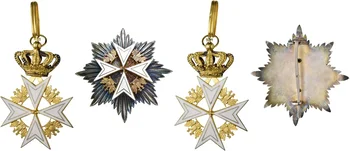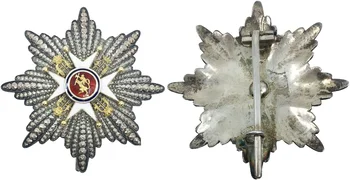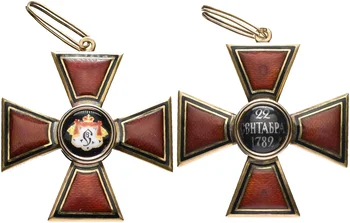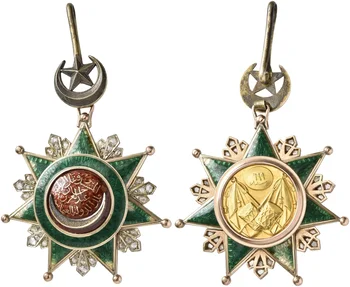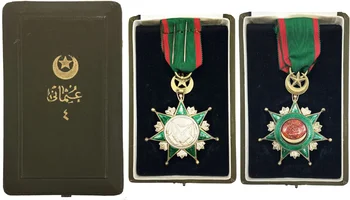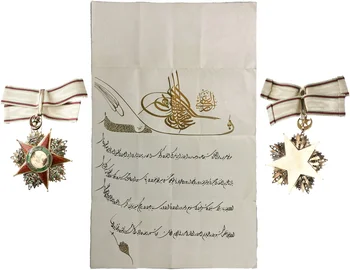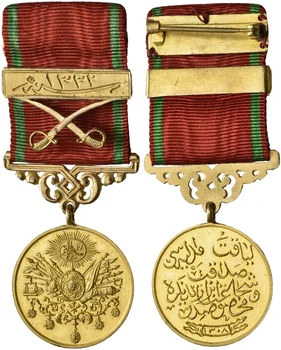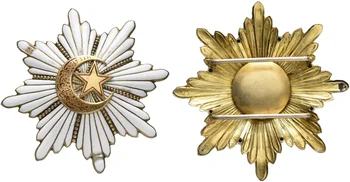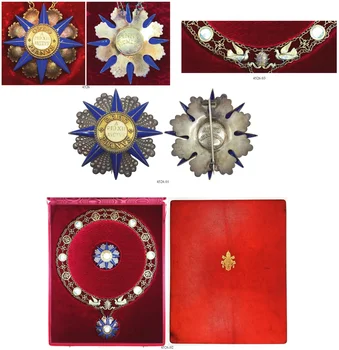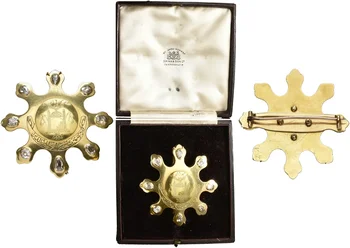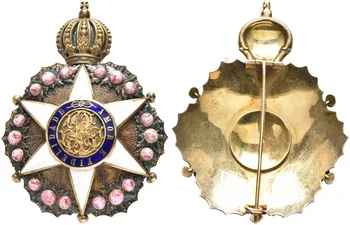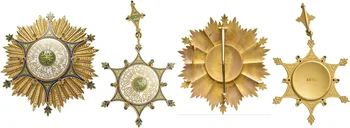 4
4 (Imperial Order of the) Precious Star of the Double Dragon. 1st model (1882-1896), 2nd issue (1st to 3rd class with breast stars - probably since 1894), 3rd class, 3rd-grade set of insignia, Chinese manufacturing, consisting of: neck badge, 73.4 x 46.7 mm, silver gilt and enamels, with blue glass cabochons, 57.6 g, with its original old embroidered and conditioned neck ribbon, and breast star, 85.6 x 85.5 mm, silver, partly gilt, and enamels, the dragons with some enamel chipping, the colouring in the inner centre ring mostly gone, with larger and small blue glass cabochon, 15.4 g, with pin.
Äusserst selten / Extremely rare. Gutes sehr schön / Good very fine.
(~€ 4’675/USD 5’495)
Extremely rare set that obviously in this combination was awarded from 1894 until 1896 only.
The (Imperial Order of the) Precious Star of the Double Dragon was established during the reign of the Guangxu Emperor (1871-1908, reigned since 1875) under the regency of the Empress Dowager Cixi (1835-1908, regent since 1861) on February 7, 1882, as a general order for civil and military merit, restricted to foreigners only. It consisted of five classes, of which the three upper ones were subdivided again into three grades. Its statutes, including full-size illustrations, were printed in Chinese and also in French by Th. Dupuy in Paris in form of a proposal of the Tsongli-Yamen (Premier’s office) to the Empress Regent on February 7, 1882. On the insignia of the 1st model, the class and grade designation is written in Man characters.
The early insignia were made in China, but they were often criticized in the Western World as being below the dignity of China, as being worn only as neck badges (although on beautifully embroidered ribbons) without stars even in the highest classes, as having the size of cow bells, and as being not shiny enough. This led to a number of changes. Sashes were introduced already in 1883 for the 1st and 2nd class which, according to a decree of 1894, had now to be in gold and to be accompanied by breast stars.
The variety of these insignia of this 1st model was greatly enhanced by the fact that the recipients of the three lower classes could be proposed to the Court by Viceroys, Governors, Generals and other high officials who, however, had to pay for the insignia. This was used particularly by Li Hongzhang (1823-1901) to introduce neck badges of reduced size and of non-standard design. When breast stars were introduced in 1894, the silver stars were also ordered in Europe (from, e.g., Halley, Krétly, Lemaitre, Wolfers, and Godet) and surmounted by a much reduced, Chinese-made badge.
In spite of the decentralized proposals, a central roster of all bestowals was kept in Peking with a running number through all classes. These numbers, repeated on the bestowal documents, allow the conclusion that less than 1000 insignia of the 1st model in all classes were distributed from 1882 until the outbreak of the Boxer Rebellion. In 1911, the order was abolished and replaced by a new system of five different orders, of which two consisted of eight classes. These orders were only conferred until the end of the Chinese monarchy in 1912.
Dieses Los steht nicht mehr zum Verkauf.
 1
1 